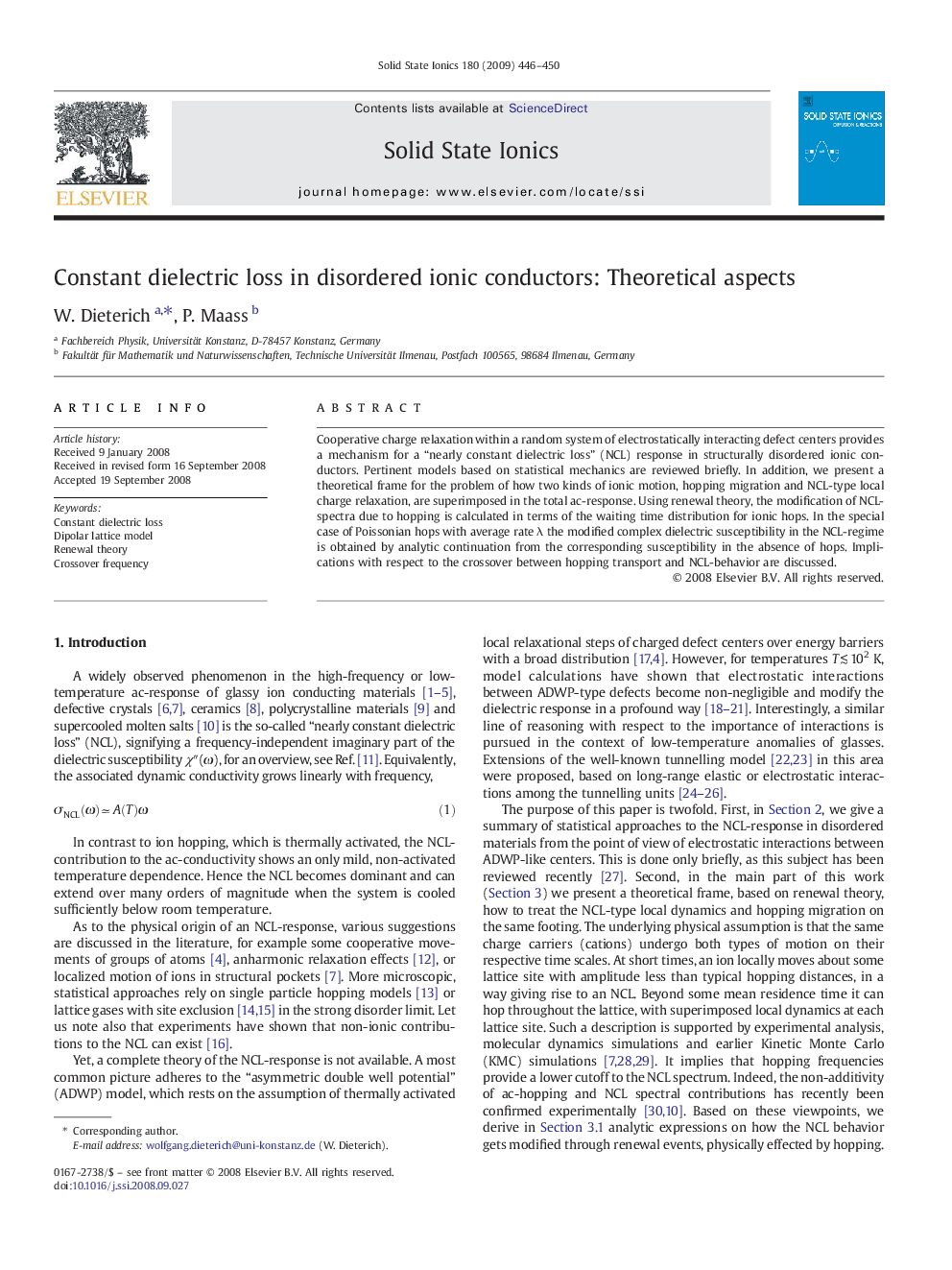| Article ID | Journal | Published Year | Pages | File Type |
|---|---|---|---|---|
| 1297852 | Solid State Ionics | 2009 | 5 Pages |
Abstract
Cooperative charge relaxation within a random system of electrostatically interacting defect centers provides a mechanism for a “nearly constant dielectric loss” (NCL) response in structurally disordered ionic conductors. Pertinent models based on statistical mechanics are reviewed briefly. In addition, we present a theoretical frame for the problem of how two kinds of ionic motion, hopping migration and NCL-type local charge relaxation, are superimposed in the total ac-response. Using renewal theory, the modification of NCL-spectra due to hopping is calculated in terms of the waiting time distribution for ionic hops. In the special case of Poissonian hops with average rate λ the modified complex dielectric susceptibility in the NCL-regime is obtained by analytic continuation from the corresponding susceptibility in the absence of hops. Implications with respect to the crossover between hopping transport and NCL-behavior are discussed.
Keywords
Related Topics
Physical Sciences and Engineering
Chemistry
Electrochemistry
Authors
W. Dieterich, P. Maass,
